Global data is expected to exceed 200 zettabytes by 2025. These include data stored on private and public IT infrastructures, utility infrastructures, and personal computing devices, including laptops, tablets, smartphones, and IoT devices.
IoT’s rise has activated an increase in the volume of data, which has prompted a radical shift in how data is traditionally stored and processed. Global spending on cloud infrastructure is estimated at $225 billion in 2022, and consumers expect real-time access across devices.
This article will explore trends and insights on data storage—the market, methods, data centers, and more. Read on.
Editor’s Choice
- Global data is expected to reach 200 zettabytes by 2025.
- 79% of small businesses store less than 50TB.
- Data stored in the cloud is projected to reach 100 zettabytes in 2025.
- In 2022, cloud services amounted to $225 billion.
- SAN storage market is expected to reach $52.3 billion by 2032.
- Nearly 10,978 data centers exist globally.
- In 2021, data centers have stored 1,327 exabytes of data.
Key Data Storage Statistics and Insights
Data storage has been progressively increasing worldwide, with 64.2 zettabytes of recorded data in 2020. This amount of data created and consumed will reach 180 zettabytes by 2025.
The rapid increase in data volume can be attributed to the recent rise in the number of IoT sensors and edge devices. The growing demand for storage due to the COVID-19 pandemic, which caused more people to work and learn from home, is also a contributing factor.
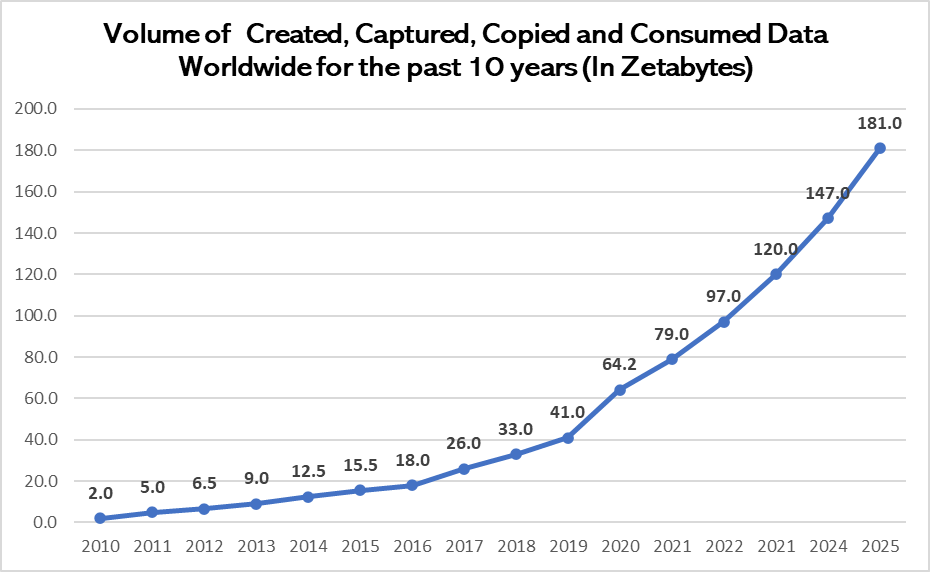
Learn more about data storage and its popular methods by looking at the latest statistics in the following sections.
Revealed: The Latest Trends in Data Storage Methods
One of the crucial aspects of every business is managing and organizing its data storage. Companies of all sizes need effective data storage methods to handle increasing data. As the company progresses, it also requires big data storage like the following:
- 79% of small businesses store less than 50TB
- 78% of mid-sized companies store less than 100TB
- 63% of enterprises store more than 100 TB
Read on to examine the different data storage methods.
1. Cloud storage is projected to reach 100 zettabytes in 2025.
(Cybersecurity Ventures, 99firms)
Cloud storage is a modern method that stores data on virtual servers and platforms. It is prominent among businesses as it is low-cost, flexible, and offers high scalability. This method is also hosted and supervised by third-party services, like AWS, Microsoft Azure, and Google Cloud—which have the highest usage at 94.44%.
By 2025, data stored in the cloud will reach 100 zettabytes, equivalent to half of the world’s garnered data. This immense volume signifies a significant shift towards cloud computing and showcases the increasing reliance on remote data storage solutions for personal and enterprise use.
2. Enterprise spending on cloud and data centers reached $225 billion in 2022.
(Statista)
Enterprise spending on cloud infrastructure and data centers has been increasing recently. Cloud services spending amounted to $225 billion in 2022, a significant increase from $47 billion in 2021. Organizations’ demand for modern networking, storage, and database solutions drives the growing market for cloud infrastructure services.
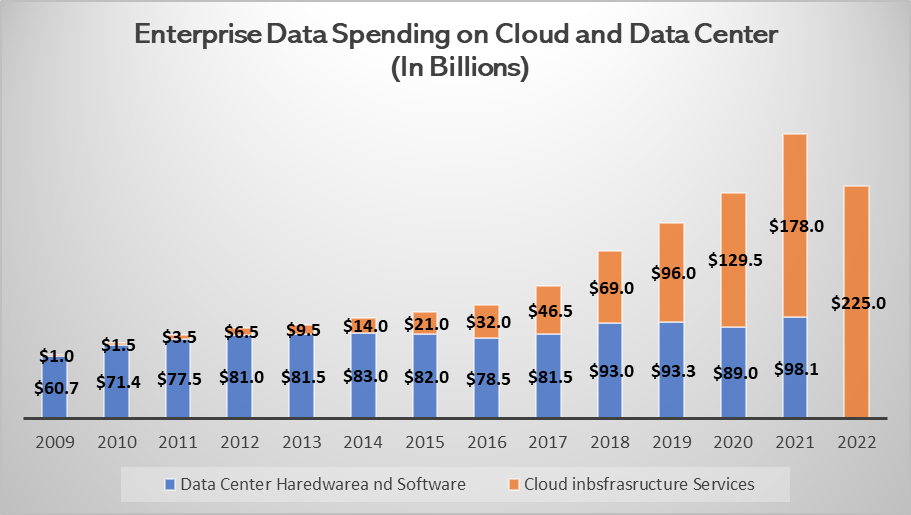
On the contrary, enterprise spending on data centers has declined over the past few years. Data center hardware and software include spending on servers, networking, storage, and security. The shift in how much organizations spend on data centers reflects the changes in how businesses adopt technology, highlighting the recent increased reliance on cloud services.
3. The block storage market, valued at $3.87 billion in 2019, is projected to be worth $8.25 billion by 2027.
(Verified Markets Report)
The block storage method allows data to be stored in a separate and distinct file. It is mainly used in virtualized servers, object storage, and software-defined storage applications. Block storage is used for various applications such as:
- Relational or transactional databases
- Time-series databases
- Containers
- Boot disks
- Hypervisor file systems
The increasing demand for software-defined storage solutions and the growing adoption of cloud computing are the key drivers for the growth of block storage. Verified Market Research reported that the block storage market value reached $3.87 billion in 2019 and is expected to reach $8.25 billion by 2027.
4. The SAN storage market is expected to reach $52.3 billion by 2032.
(CoherentMarketingInsights)
Storage A Network (SAN) is tailored to access servers and computers that supply shared storage space. It helps specific environments to combine servers, storage, network switches, software, and services for businesses of all sizes.
Globally, the SAN market was valued at $19.4 billion in 2022. It is expected to reach $52.3 billion by 2032, with an increasing 10.7% CAGR from 2023 to 2032.
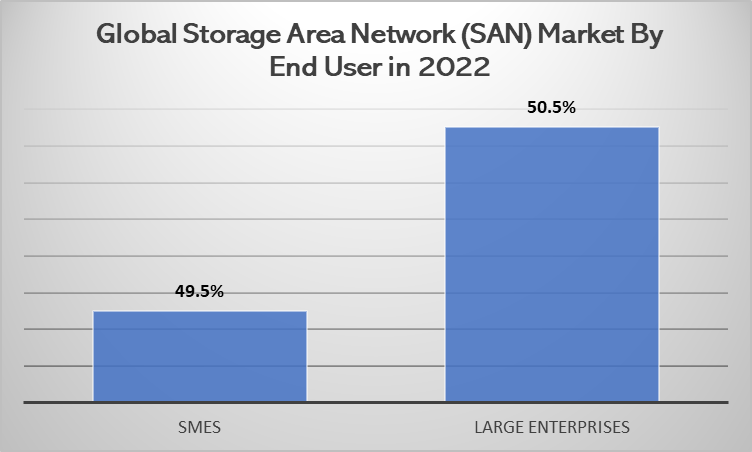
Large enterprises hold a larger market share among SAN end users. This indicates their need for extensive data management and enhanced IT infrastructure, emphasizing the importance of efficient data storage systems when handling rising data volume.
A Statistical Breakdown: How Many Data Centers Are There?
The significant rise in data generation and use across diverse industries has increased the demand for data servers and centers. As of December 2023, there were nearly 10,978 data centers globally.
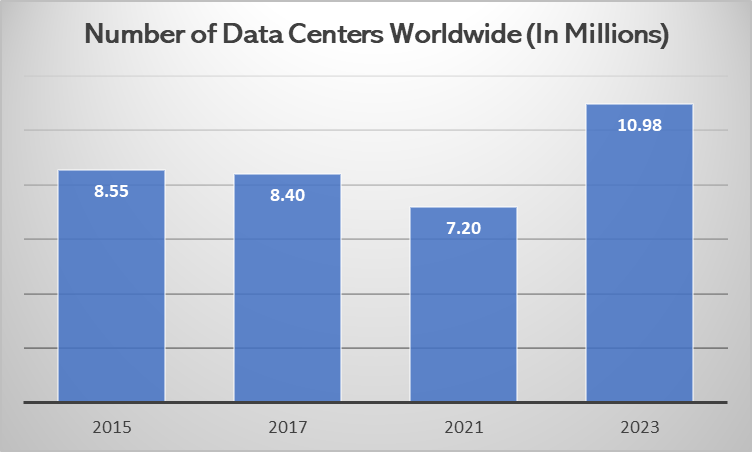
Consequently, the data center market was valued at $214 billion in the same year. It is projected to reach $421.4 billion in 2030, with a 10.2% CAGR from 2024 to 2030. The growing trend involves planning, constructing, operating, and maintaining infrastructure dedicated to hosting computing resources that data centers can offer.
Discover the relevant information regarding data centers in the following sections.
5. Data stored in data centers worldwide surged from 547 exabytes in 2018 to 1,327 exabytes in 2021.
(Statista)
Recent reports show that in 2021, data centers stored 1,327 exabytes of data. This is a significant increase from 2018, when 547 exabytes of data were stored in data centers.
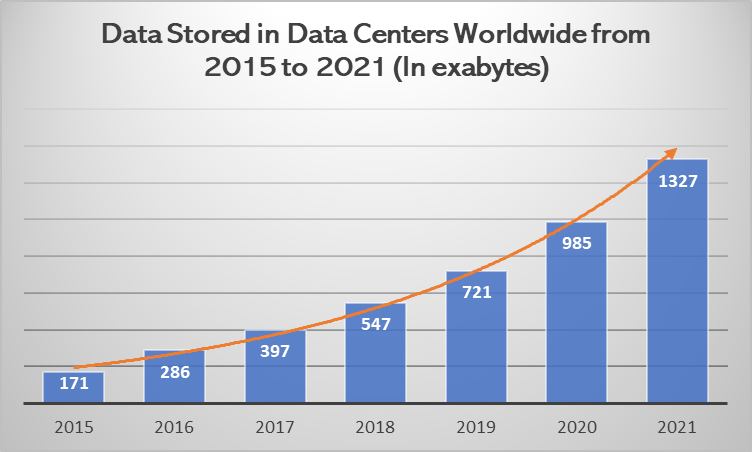
The data center storage market has witnessed remarkable growth due to data volume and IT infrastructure advancements. The arrival of big data, cloud computing, and virtualization creates a demand for scalable storage solutions. Besides, innovations like NVMe, SCM, and object storage contribute to reshaping the landscape.
6. The United States has the largest data centers globally, totaling 5,381.
(Precedence Research, Statista)
The United States has the most extensive data center worldwide, with 5,381 data centers. Germany follows with 521 data centers, and the United Kingdom with 514 data centers.
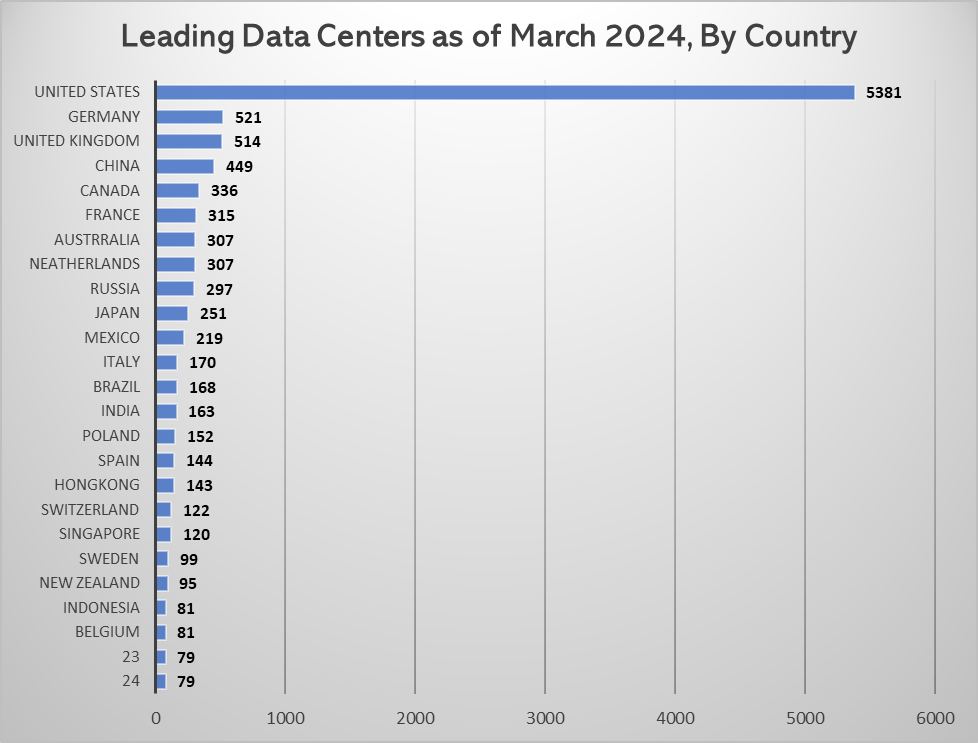
The North American market had the most significant sales share, with over 35.8% in 2021. The demand for efficient data handling across various industries and technological developments is expected to expand the market. Robust telecom networks and administration efforts are also anticipated to accelerate DCaaS adoption.
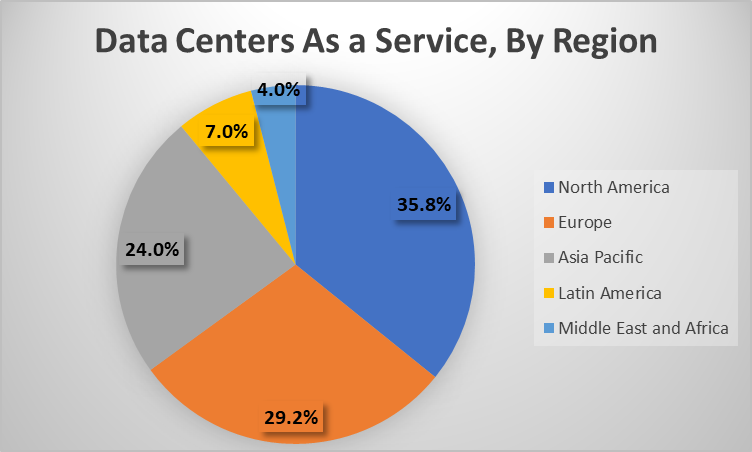
Conclusion
The data storage industry has experienced exponential growth over the past few years, as shown by the impressive statistics gathered. With today’s ever-advancing technology, it is clear that the sector will continue to expand and evolve to cater to the increasing demand for secure, efficient, and economical data storage solutions.
Staying informed and comprehending the trends and changes in this industry is vital for everyone, especially industries that rely heavily on data. The future for data storage is promising, with technological advancements bringing about an exciting array of possibilities.
Data Storage FAQs
What is data storage in statistics?
In statistics, data storage refers to mechanical media that documents and preserves digital information- input and output data, for ongoing or future operations.
What are the 3 types of data storage?
The most prominent forms of data storage are file, block, and object storage, each ideal for different purposes.
How much data is stored in the world?
According to Statista, the world generated 33 zettabytes of data in 2018 alone, a number that has steadily increased over the years.
How important is data storage?
Data storage is significant as it allows people to preserve and retain information over time. Whether personal photos and memories or critical business records and documents, storing data ensures that it can be accessed and used in the future.






